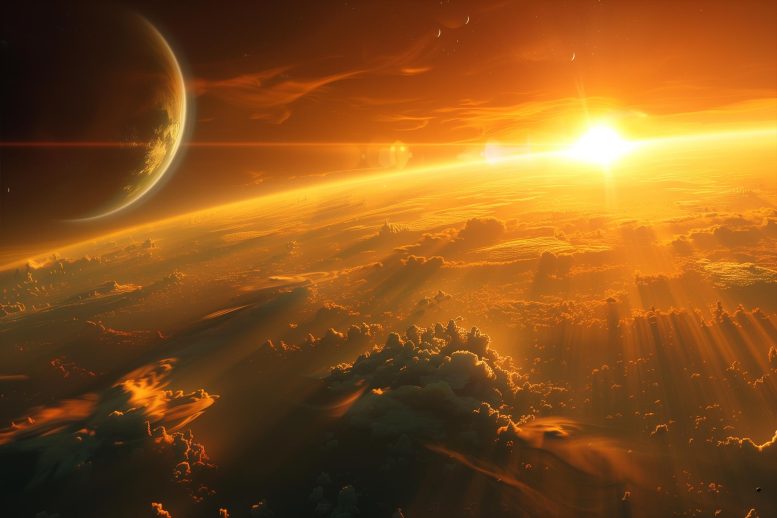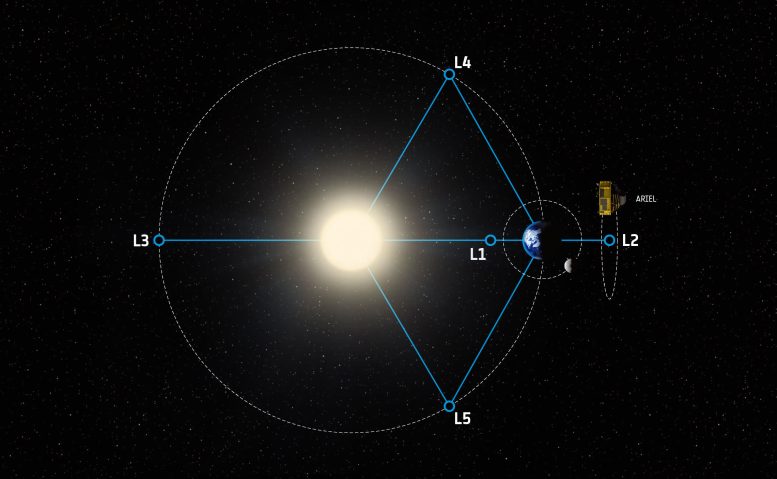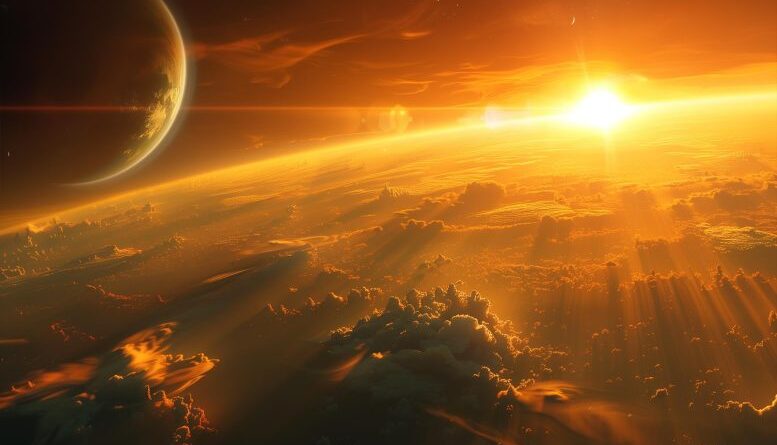$50,000 Ariel Space Challenge: Exploring Exoplanet Space With AI

The 2024 Ariel Data Challenge is looking for new AI solutions to analyze weather patterns among noisy data. Offering $50,000 in prizes and support from various space agencies, the competition encourages advances in space science and data interpretation ahead of the 2029 Ariel mission. Credit: SciTechDaily.com
Ariel Data Challenge 2024, organized by UCL, invites data scientists and AI enthusiasts to analyze it. exoplanet atmosphere using data from European Space AgencyAriel’s work.
With a $50,000 prize pool, the competition aims to innovate methods of interpreting weak signals in noisy telescope data. Supported by a coalition that includes national organizations and academic institutions, this challenge provides a great opportunity for sponsors to advance our understanding of exoplanets and prepare for the launch of Ariel in 2029.
The competition, based on the Ariel space mission of the European Space Agency and presented at NeurIPS 2024. machine learning Conference, will deal with one of the most complex and most important problems of the analysis of astronomical data – extracting weak signals from other countries from the noise of the space telescope. It offers participants a unique opportunity to participate in cutting-edge research in the field of exoplanet atmospheres, with a prize pool of $50,000.
Dr. Kai Hou (Gordon) Yip, Ariel Data Challenge Lead at UCL Physics & Astronomy, said: “We are excited to see the new solutions that the global data science community can bring to this challenging task.”
Collaboration and Global Support
This challenge came about thanks to a collaboration led by the UCL Center for Space Exochemistry Data, bringing together partners including the Center National D’études Spatiales, Cardiff University, Sapienza Università di Roma, and Institut Astrophysique de Paris.
The competition is sponsored by the Center National d’Etudes Spatiales, in collaboration with the Kaggle Competitions Research Program. It also benefits from the support of a consortium of leading space agencies and institutions, including the UK Space Agency, the European Space Agency, STFC RAL Space, and the STFC DiRAC HPC Facility.

Ariel will be placed in orbit around Lagrange Point 2 (L2), a point of gravitational balance 1.5 million kilometers beyond Earth’s orbit around the Sun. Credit: ESA/STFC RAL Space/UCL/Europlanet-Science Office
Dr. Caroline Harper, Head of Space Science, UK Space Agency, said: “By supporting this challenge, we aim to find new ways to use AI and machine learning to improve our understanding of the universe.
“Exoplanets may be more abundant in our galaxy than stars themselves and the techniques developed through this prestigious competition could help us open new windows to study the structure of the atmosphere.” of them, even their weather.
“The UK Space Agency’s investment in space science research is vital to supporting new projects like this, which can benefit people, businesses and communities around the world. We look forward to seeing the results.”
Dr. Theresa Rank-Lueftinger, Project Scientist for the ESA (European Space Agency) mission Ariel, said: “Every bit of noise from our space telescopes could hide the key to understanding the distant universe. Our mission is to unlock that opportunity with new machine learning techniques. It will be amazing to see what the AI community comes up with! ”
Understanding the Atmospheres of Exoplanets
The discovery of exoplanets has changed our view of the universe, challenging conventional wisdom about the nature of planetary systems, the uniqueness of Earth, and the possibility of life elsewhere.
As of today, astronomers know of more than 5,600 exoplanets. However, recognizing these worlds is only the first step, as scientists are still seeking to further understand and characterize the nature of these worlds by studying their atmospheres.
The Ariel Space Mission of the European Space Agency, whose scientific leadership is provided by Professor Giovanna Tinetti of UCL, will be launched in 2029 and will complete one of the largest surveys of these planets by observing the atmosphere of about a fifth of the known exoplanets. .
Paul Eccleston, Ariel Mission Consortium Manager, RAL Space, said: “It’s an exciting time for Ariel and for our involvement in RAL Space, where we should start building a prototype reward system in the coming months. It’s also a busy time for other parts of the corporation, including those we may face early on with the data challenges we may face after launch.
“The Ariel Data Challenge will help us a lot in this regard, but it’s also a great opportunity for participants to get involved and contribute to a very exciting project. Good luck to those taking part!”
However, observing these atmospheric conditions and determining their properties is a major challenge. These atmospheric signals only capture a minute fraction of the light from the stars found in the planetary systems, and they are always contaminated by the noise of the instruments.
Professor Ingo Waldmann, co-leader of the Ariel Data Challenge based at UCL Physics & Astronomy, said: “Modern astrophysics poses many well-solved problems, and sometimes only use the latest AI techniques. This problem is proving itself to be innovative, and I’m very excited to see what new solutions the AI community will come up with.”
The Ariel Data Problem
The Ariel Data Challenge 2024 focuses on overcoming these sources of noise, such as “jitter noise” caused by atmospheric vibrations. This noise, along with other obstacles, complicates the analysis of spectroscopic data used to study exoplanet atmospheres.
With support from the DiRAC HPC Facility, mission scientists produced the most accurate representation of Ariel’s observations to date, based on Ariel’s payload design and including the effects of noise from the data of the plane found by James Webb Space Telescope.
Scientists involved in the Ariel project are now looking for new ways to push the limits of modern data analysis techniques – new solutions that can effectively block these sources of noise and extract important signals from the air. of an exoplanet.
Tournament Details and Schedule
The competition is open now until the end of October. Winners will be invited to present their solutions at the NeurIPS conference, with cash prizes available for the top six solutions.
It will be the fifth installment of the Ariel Machine Learning Data Challenge, after four competitions in the past five years. The Ariel Data Challenge attracts around 200 participants from around the world each year, including entrants from leading academic institutions and AI companies.
This challenge and its predecessors have played a major role in helping make exoplanet research accessible to the machine learning community. The challenge is not designed to specifically solve data analysis problems but provides a platform for discussion, encourages future collaboration, and helps the Ariel team prepare for data analysis best practices in the future flying mission.
More information about the competition and how to participate can be found on the Ariel Data Challenge website.
#Ariel #Space #Challenge #Exploring #Exoplanet #Space
